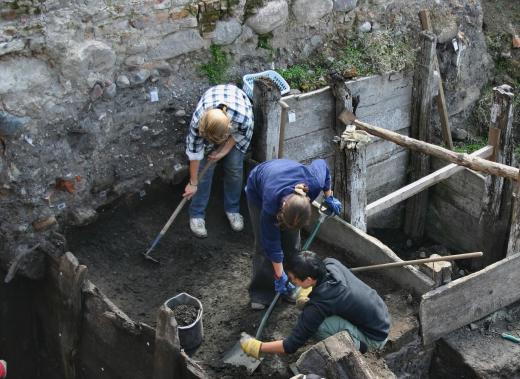What Are the Different Types of Archaeology Digs?
The different types of archaeology digs include research excavations, pre-development excavations, and digs performed by hand or machine. Research excavations are paid for by academic organizations and private parties. Development excavations are paid for by a developer and, while quite similar to research excavations, this type of dig is often rushed. All digs are also performed either by hand, machine, or both. In addition, each dig falls into a certain category based on the site where it is performed.
Archaeology digs differ based on how much time an archaeologist has to recover an artifact or body. The most preferred type of dig is called a research excavation. Research excavations occur when everyone has enough time and funds to carefully recover all items. These archaeology digs are not rushed, so the archaeologists can take months or even years to fully recover everything from the site.

Another kind of dig is called the pre-development excavation. This kind of dig occurs when a business plans or has already begun to build on the site. The artifact is usually a surprise discovery, with no one knowing the site was a burial ground or other site that might have historical significance. In this situation, archaeologists act quickly to recover the artifacts and sometimes work around building equipment that is already in place. This type of dig is typically paid for by the developing company rather than an academic organization, and time is of the essence.

Many archaeologists perform archaeologist digs by hand using special hand-held tools. The work can be labor-intensive and often takes a long time to complete. On the other hand, sometimes an archaeologist uses a machine to dig up artifacts, which is a controversial practice. Machines are less precise than humans when it comes to archaeology, so they are usually limited to removing overburden. Basically, they are limited to digging in areas where there is a lot of soil and other debris covering the item of interest and the machine has little chance of disturbing something important.

Archaeology digs are performed on all different kinds of places. From burial grounds to causeways and finding lost bodies or ancient roads, archaeologists work in a wide variety of places around the world. Digging up a lost body is very different from recovering a religious structure. It may require different tools, take longer or shorter to complete, and need different experts to decipher the meaning of the items found.
AS FEATURED ON:
AS FEATURED ON:













Discuss this Article
Post your comments